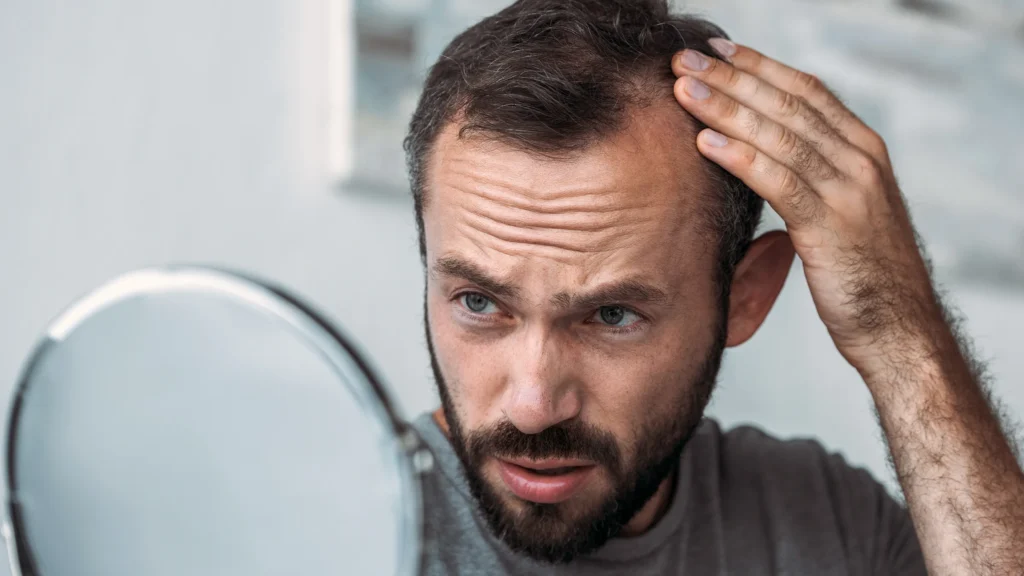Hair loss affects millions worldwide, leading to frustration and a search for lasting solutions. One promising frontier in this journey is hair cloning, a breakthrough technique aimed at regenerating hair using your cells.
This guide explores how hair cloning works, its benefits, current research, expert insights, and what you need to know before considering it.
Discover if this future-focused method could be the answer to your hair restoration needs.
Understanding Hair Cloning
What is Hair Cloning?
Hair cloning is an advanced hair restoration method that involves replicating hair follicle cells to promote new hair growth.
Unlike traditional hair transplants, which relocate existing follicles, hair cloning multiplies cells, potentially offering an unlimited supply of hair for those with thinning or balding scalps.

How Does Hair Cloning Work?
- Step 1: Extraction – Specialized dermal papilla cells are harvested from healthy hair follicles.
- Step 2: Cultivation – These cells are cultured and multiplied in a controlled lab environment.
- Step 3: Implantation – The expanded cells are re-injected into the scalp to encourage new follicle growth.
This innovative process aims to create natural, long-lasting hair regrowth by leveraging your body’s biology.
Benefits of Hair Cloning
Unlimited Donor Hair Supply
Unlike standard transplants that are limited by donor area density, hair cloning could potentially provide an endless supply of viable cells for restoration.
Minimally Invasive Procedure
Hair cloning procedures are expected to be less invasive than follicular unit transplantation (FUT) or follicular unit extraction (FUE), resulting in:
- Less scarring
- Faster recovery
- Reduced discomfort
Potential for Natural-Looking Results
Because cloned follicles originate from your cells, the regrown hair is more likely to match your natural hair in:
- Texture
- Color
- Growth direction
Current Research and Developments
Clinical Trials and Studies
Multiple biotech firms and research institutions are working to make hair cloning a clinical reality:
- RepliCel Life Sciences is developing cell therapy techniques for androgenetic alopecia.
- HairClone (UK) has begun storing follicle cells in anticipation of treatment approval.
Preliminary results are promising, showing increased follicular activity and safe responses in early trials.
Leading Institutions and Companies
- Yokohama National University (Japan) has seen success in growing new follicles in lab mice.
- Stemson Therapeutics (USA) is developing stem cell-based treatments to regenerate hair follicles.

Challenges and Considerations
Technical and Biological Hurdles
- Ensuring cloned cells retain their ability to grow healthy, functioning hair
- Preventing immune rejection or abnormal growth
- Maintaining consistent results across different patients
Regulatory and Ethical Concerns
- Treatments are still under clinical review and not widely available
- Ethical discussions around genetic manipulation and long-term effects
Timeline and Availability
When Will Hair Cloning Be Available?
Experts estimate that hair cloning could become commercially available within the next 5–10 years, depending on:
- Clinical trial outcomes
- Regulatory approvals in different countries
Cost and Accessibility
While early versions of the treatment may be expensive, costs are expected to decrease as the technology matures. It may initially be available in select clinics offering advanced regenerative treatments.
Expert Opinions and Case Studies
Insights from Leading Researchers
“Hair cloning has the potential to completely change the way we approach hair loss,” says Dr. Angela Christiano, a leading hair restoration researcher at Columbia University.
Patient Experiences
Early participants in cell banking and follicle preservation programs (e.g., HairClone) report positive experiences with:
- Non-invasive sampling
- Personalized future treatment planning

Alternative Hair Restoration Methods
Current Effective Treatments
While waiting for hair cloning, individuals may consider:
- FUE or FUT transplants
- PRP (Platelet-Rich Plasma) therapy
- Low-level laser therapy (LLLT)
- FDA-approved medications like minoxidil or finasteride
Comparing Hair Cloning to Other Methods
| Feature | Hair Cloning | Hair Transplant |
|---|---|---|
| Donor Limitation | None | Yes |
| Invasiveness | Minimal (expected) | Moderate |
| Availability | Not yet available | Widely available |
| Cost (initially) | High | Variable |
Frequently Asked Questions (FAQs)
Is hair cloning safe?
Current studies show positive safety results, but broader testing is still underway before full-scale rollout.
How long do the results last?
If successful, hair-cloned cells could offer permanent hair regrowth, though long-term studies are ongoing.
Who is an ideal candidate for hair cloning?
Those in the early stages of hair loss or with limited donor hair may benefit the most.
Are there any side effects?
Minor side effects like swelling or redness may occur during trials, but more data is needed on large-scale applications.
Conclusion
Hair cloning represents a revolutionary leap in hair restoration technology, offering hope for limitless regrowth using your cells.
With promising research and growing interest from biotech companies, the future of hair cloning looks bright, though it may be a few years before it becomes mainstream.
📞 Ready to plan for future hair restoration options?
Book a consultation with Dr. Rana Irfan in Islamabad to discuss current treatments and secure your place in upcoming advancements like hair cloning. Take the first step toward confident, long-lasting results.
